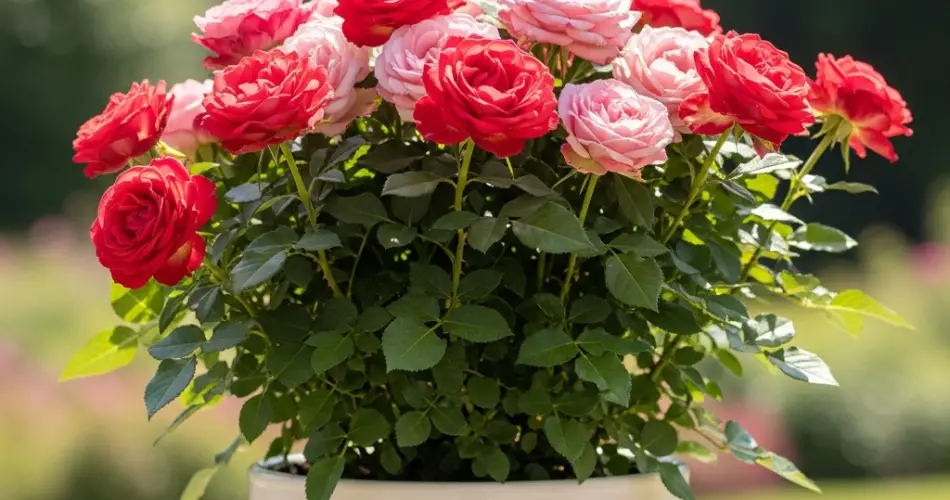Roses are timeless garden favorites, celebrated for their beauty, elegance, and unforgettable fragrance. Whether climbing over trellises, blooming in neat beds, or filling containers on patios, roses can transform any outdoor space into a haven of color and scent. But growing healthy, fragrant, and vibrant roses takes more than just planting a bush and hoping for the best. With the right care and attention, anyone can enjoy stunning blooms throughout the growing season.
Here’s the secret to growing gorgeous roses that flourish in any garden setting.
1. Choose the Right Rose Variety
The first step to a fragrant and vibrant rose garden is choosing the right variety. Some roses are bred for color or disease resistance, while others are known for their intense fragrance. If scent is a priority, look for varieties such as:
-
‘Mister Lincoln’ – Deep red with a rich, classic rose fragrance
-
‘Double Delight’ – Creamy petals with red edges and strong perfume
-
‘Gertrude Jekyll’ – An English rose with a strong, old-rose scent
-
‘Madame Isaac Pereire’ – Highly fragrant Bourbon rose with vibrant blooms
Always select varieties suited to your local climate. Disease-resistant cultivars also reduce the need for chemical treatments, making maintenance easier.
2. Give Them Plenty of Sun
Roses love sunlight. For best results, plant them in a spot that gets at least 6–8 hours of direct sunlight per day. Morning sun is especially valuable because it dries the dew quickly, reducing the chance of fungal diseases.
Avoid planting roses in shaded areas or spots where sunlight is blocked for most of the day. Insufficient light leads to poor blooming and weak stems.
3. Use Nutrient-Rich, Well-Draining Soil
Roses are heavy feeders and need fertile soil to produce abundant flowers. The soil should be:
-
Loamy and well-draining to prevent waterlogged roots
-
Rich in organic matter, such as compost or aged manure
-
Slightly acidic, with a pH between 6.0 and 6.5
Before planting, amend your garden soil with compost or organic matter to improve structure and fertility. If you’re growing roses in containers, use a high-quality potting mix designed for flowering plants.
4. Water Deeply, But Not Too Often
Roses need regular watering, but the frequency depends on climate, soil type, and age of the plant. A deep soak encourages strong root growth and helps the plant withstand heat and drought.
-
Water 2–3 times per week during hot, dry periods
-
Focus on watering the base of the plant to avoid wetting the leaves
-
Use mulch to retain moisture and keep roots cool
Avoid shallow, frequent watering, which can promote weak roots and leave plants vulnerable to stress.
5. Feed Roses Regularly
To fuel lush growth and blooming, roses benefit from regular feeding during the growing season.
-
Apply a balanced rose fertilizer (such as 10-10-10) every 4–6 weeks during spring and summer
-
Use organic options like fish emulsion, compost tea, or alfalfa meal for a gentler, slow-release boost
-
Stop fertilizing in late summer to allow the plant to harden off before winter
Overfeeding can lead to leafy growth at the expense of flowers, so follow label instructions carefully.
6. Prune for Strength and Shape
Pruning helps roses grow in a strong, attractive form and encourages more blooms.
-
In early spring, remove dead or weak stems and shape the plant
-
Cut back to healthy, outward-facing buds to promote airflow and outward growth
-
Remove spent flowers (deadheading) throughout the season to encourage new blooms
Proper pruning also reduces the risk of pests and diseases by improving air circulation.
7. Watch for Pests and Diseases
Common rose pests include aphids, spider mites, and Japanese beetles. Diseases like black spot, powdery mildew, and rust can also affect your plants.
To keep your roses healthy:
-
Inspect regularly for pests and remove them by hand or spray with insecticidal soap
-
Water at the base of the plant to prevent fungal disease
-
Space roses properly to improve airflow
Using disease-resistant varieties and practicing good garden hygiene will reduce the need for chemical treatments.
8. Add Mulch for Healthier Plants
A 2–3 inch layer of organic mulch around your roses offers multiple benefits:
-
Retains moisture
-
Regulates soil temperature
-
Suppresses weeds
-
Adds nutrients to the soil as it breaks down
Use bark chips, shredded leaves, or compost, but keep mulch a few inches away from the base of the stems to avoid rot.
Final Thoughts
With the right care, anyone can grow fragrant, vibrant roses that become the highlight of the garden. Start by selecting the right variety, then give your plants plenty of sun, nutrient-rich soil, deep watering, and regular feeding. Prune with care, keep an eye out for pests, and use mulch to protect and enrich the soil. These thoughtful steps will reward you with a season full of stunning blooms and sweet fragrance—no matter what size or type of garden you have.



